ForestPlanet Visits Irente Planting Site #1 in Tanzania
As previously reported here, the Irente planting site in the Usambara Mountains region of northern Tanzania spreads across 2,200 hectares (that’s the size of 5,400 football fields!). This area has about 1 million trees, but there is a real need to get another 2 million trees planted here in the near future.
Late in 2021, ForestPlanet helped to get the first 275,000 trees planted here. In June 2022, we visited Tanzania to meet the people and check on the status of the project. The trees were planted in three different areas. In this post, we’ll update you on the Irente #1 site.
The Irente #1 planting area covers the local Irente Villages. More than 68,000 trees were distributed just before the rainy season, one truckload at a time, to anyone who wanted them. The village comprises about one thousand low-income farming households, with electricity rarely available.
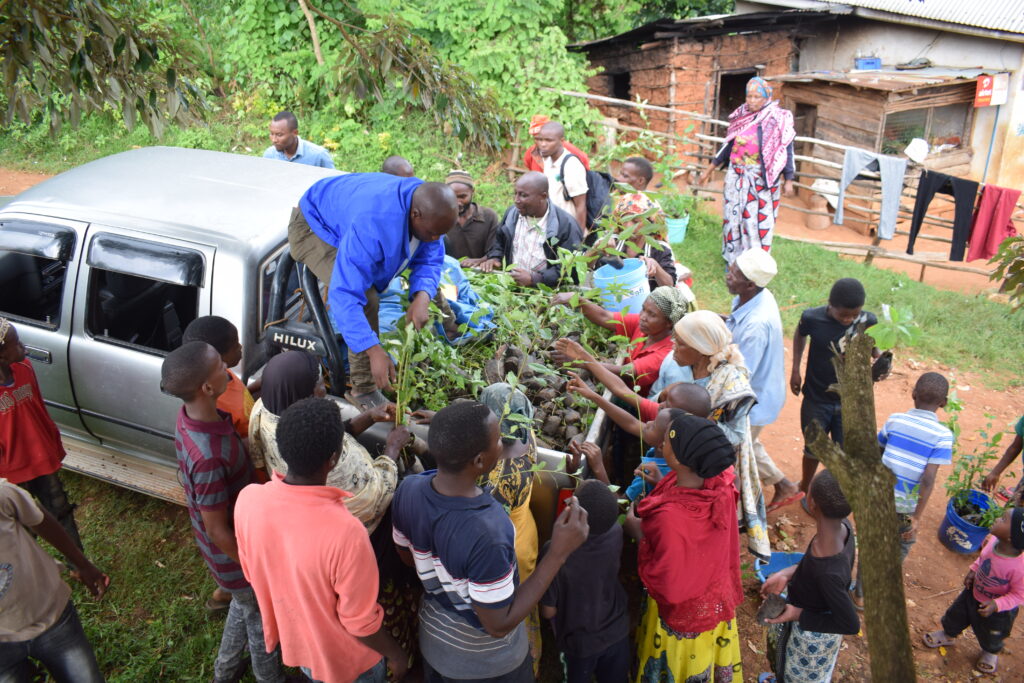
Distributing thousands of tree seedlings to an entire village.
An essential goal of this part of the Irente project is to reduce financial stress on the community, which translates directly to reducing environmental stress on the surrounding old-growth forest. These trees provide food, nutrition, and income security to the community in multiple ways, empowering the community so they will no longer need to cut down forest trees to increase their farmland.
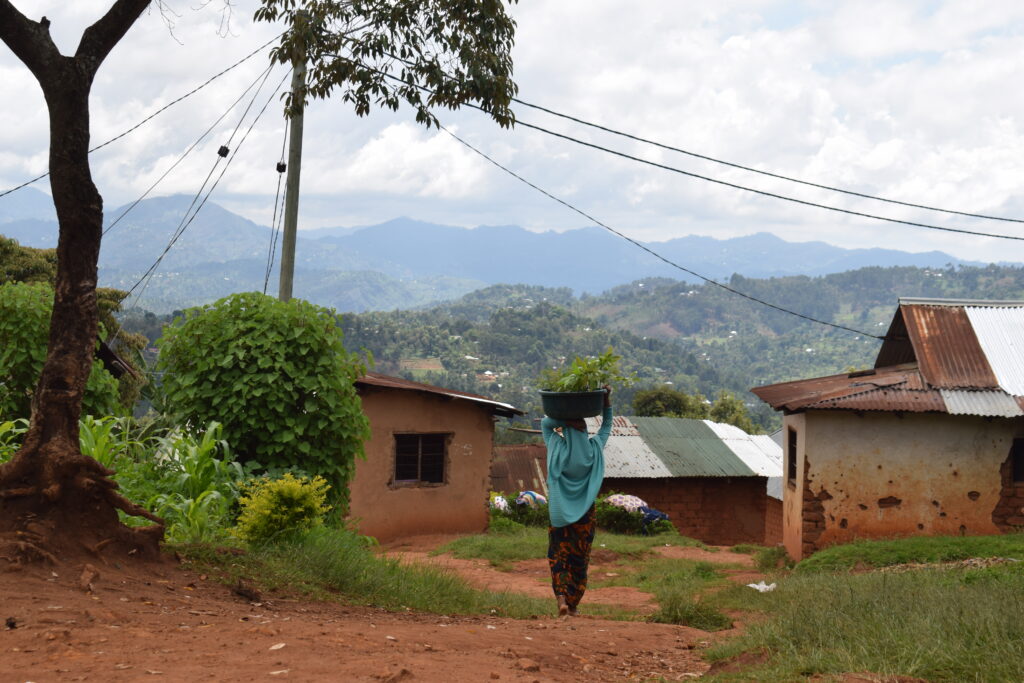
Though in a mountainous area, Irente Village is home to mostly small scale farmers.
The seedlings that were distributed included grevillea robusta, moringa oleifera, plum, peach, pear, loquat, pine, and avocado. As described in a previous article, grafting techniques were utilized on the avocado trees to safely and significantly accelerate the trees’ fruit production.
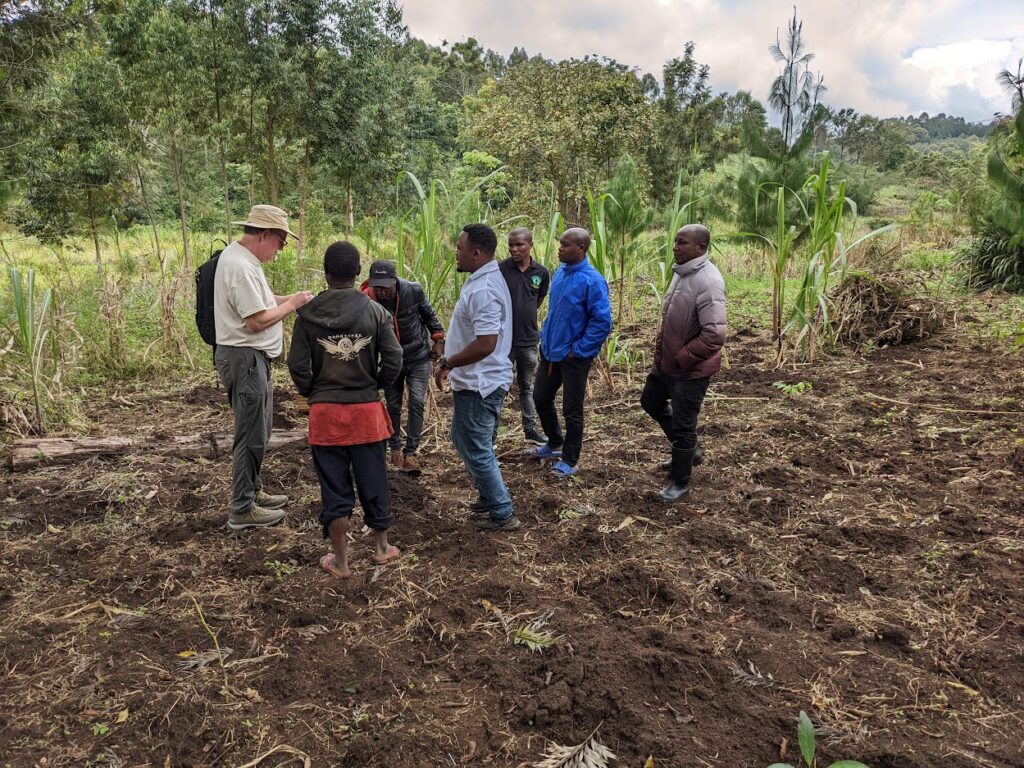
Meeting a local farmer who was glad to have received 34 tree seedlings.
Grevillea robusta is one of the most important trees for agroforestry in the tropical highlands of Eastern and Central Africa. It is commonly planted as a boundary tree around the perimeter of small farms and in rows between small fields. One study found that grevillea robusta produced the highest wood volume of nine tree species tested in agroforestry trials. Its timber is widely used for external window joinery, as it is resistant to wood rot. It has been used in the manufacture of furniture, cabinetry, and fences.
In addition to their use as a soil mulch, the leaves of grevillea robusta are used as a fodder supplement for cattle in the dry season when other fodder sources are scarce. The leaves are also used as bedding in livestock stalls.
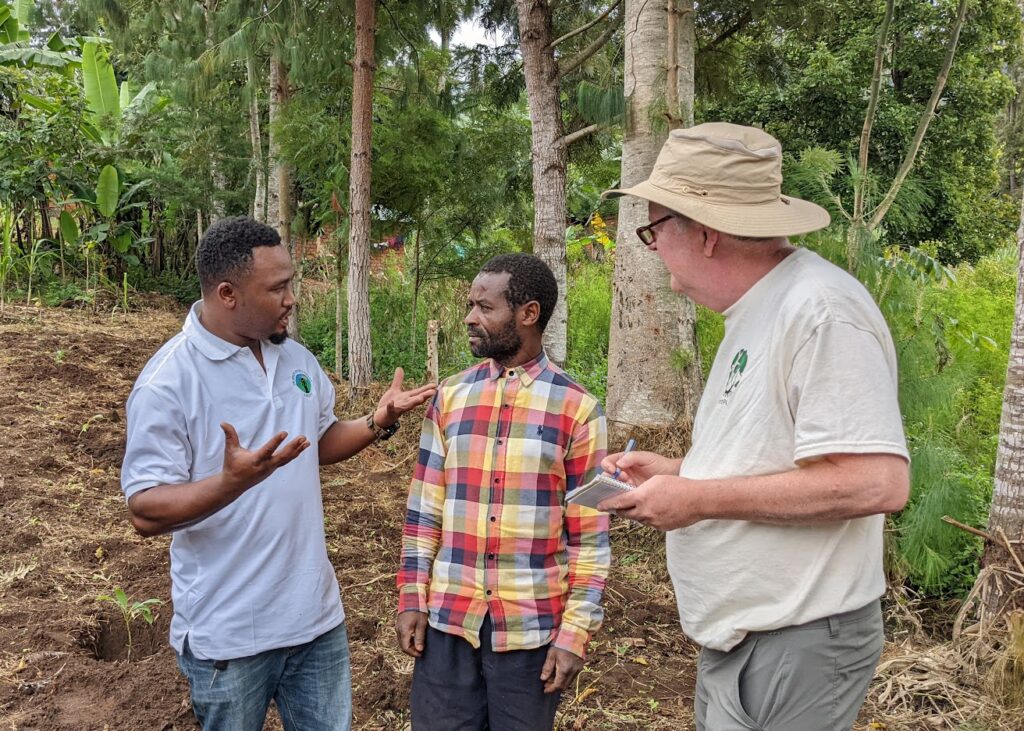
Issa Hozza of Friends of Usambara Society, local farmer Philipo, and Hank Dearden of ForestPlanet
We spoke with Philipo, a native of the village who lives with his wife and four children in very modest circumstances. His small home has neither electricity nor running water. Like most people in the region, he has a mobile phone, which he uses to keep in touch with buyers for his produce. However, he needs to visit his brother’s house regularly to charge the phone.
As part of this program, he was happy to receive:
- 27 avocado trees
- 4 pine trees
- 3 grevillea robusta (discussed above)
Each avocado tree will generate about 3,000 “berries” per year, starting within three years of being planted.
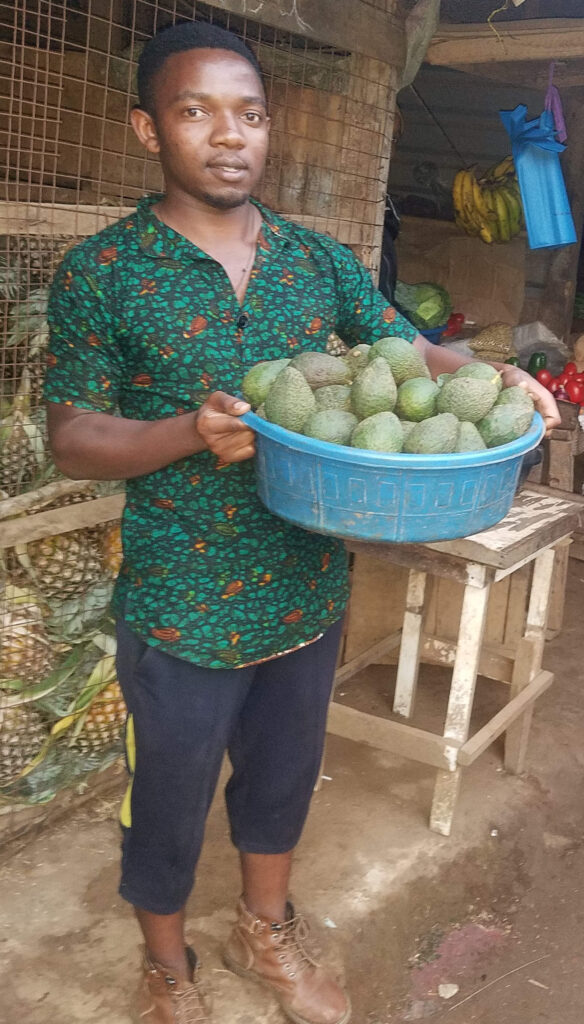
Showing off ~40 healthy avocados
As an example, the bucket above is holding about 40 avocadoes. Each tree given to Philipo will generate 75 buckets of produce per year. He and his family will consume about 20%, and the rest he’ll sell at markets in major cities like Dar es Salaam and Arusha.
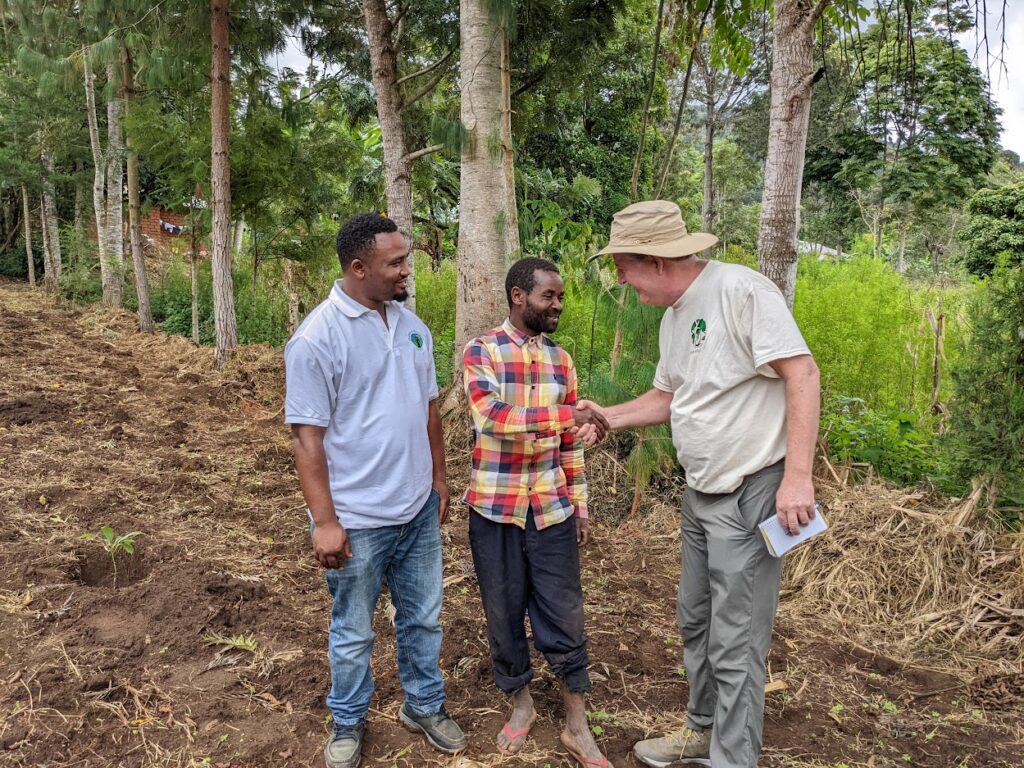
He estimates that the income from these trees alone will double his income while increasing food and nutrition security for his family. He will use the extra income to connect electricity to his home and start a sideline business raising and selling chickens and eggs.
Philipo’s story is typical for the area. We saw that a small investment of 68,000 trees can make big changes in the lives of thousands of villagers, all in a very short amount of time.
The long-term effects of this and other ForestPlanet projects will change lives for generations to come, all while pulling carbon from the atmosphere. With your help, the seeds we are planting are making a tangible difference for families like Philipo’s, communities, and the Earth. Thank you!
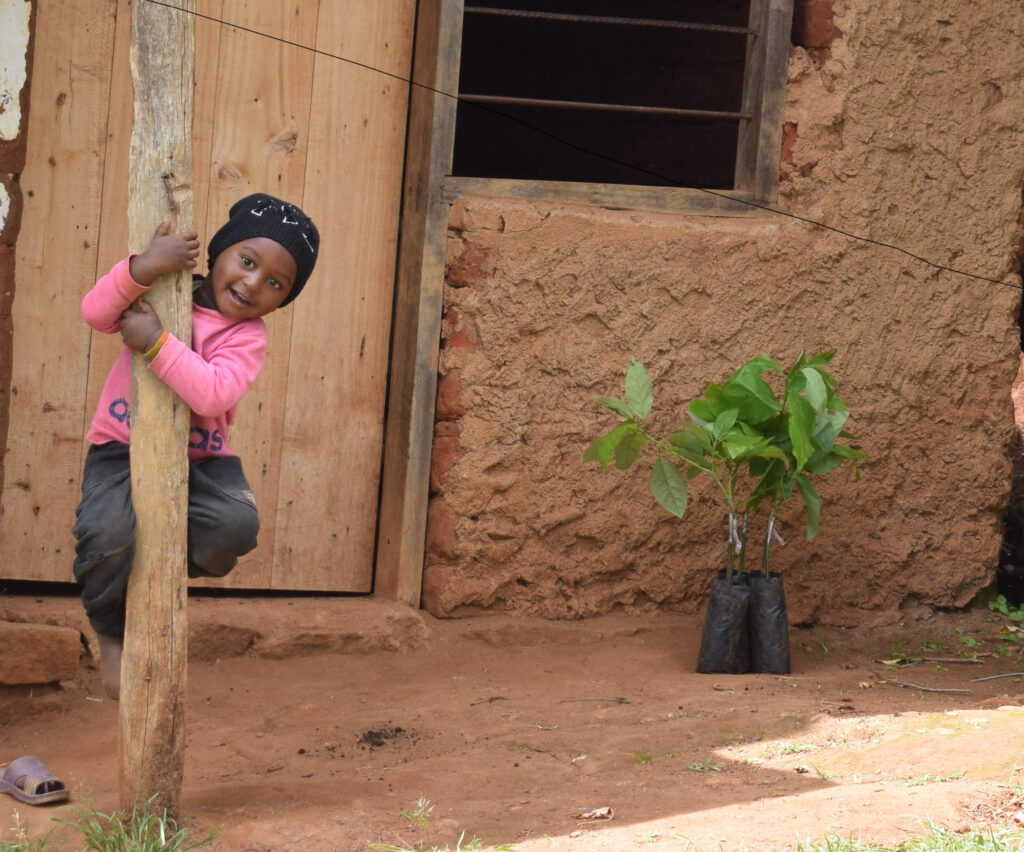
This young farmhand is very glad to receive four healthy avocado seedlings!
—
The next update in this series can be found here: The Mlesa Spring: ForestPlanet Visits Irente Planting Site #2 In Tanzania.
The final update in this series can be found here: ForestPlanet Visits Irente Planting Site #3 In Tanzania: Forest Restoration.
